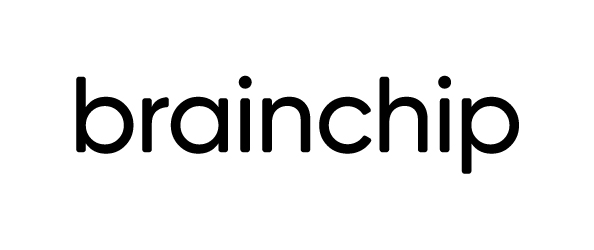equanimous
Norse clairvoyant shapeshifter goddess
Are we rebranding to Armchip
Didn't someone post something about Jerome going part time, a week or so ago?I thought Jerome NADEL was Chief Marketing Officer?
Announcing the hiring of a Chief Marketing Officer is not a fluff announcement ... especially one with Nandan's credentials. It's 'effing keeping investors informed! Something BRN just doesn't seem to get.I see it like this. An exec hire is now "unimportant" given where we are at.
Expectation is high. Revenue is coming and I am hoping that management believe that we don't need "fluff" announcements. Sean wants results and he wants to deliver shareholders (us) results.
Watch the half yearly report. I am expecting some considerable revenue. I couldn't care less if we don't get an announcement now until then as long as there is a nice jump in $.
How insignificant is an exec hire when revenue increases in the 1000's of % start rolling in!
We need to be making profits ,covering expense etcI see it like this. An exec hire is now "unimportant" given where we are at.
Expectation is high. Revenue is coming and I am hoping that management believe that we don't need "fluff" announcements. Sean wants results and he wants to deliver shareholders (us) results.
Watch the half yearly report. I am expecting some considerable revenue. I couldn't care less if we don't get an announcement now until then as long as there is a nice jump in $.
How insignificant is an exec hire when revenue increases in the 1000's of % start rolling in!
After coming across Cambridge Consultants and Prophesee working together tin the cell therapy field , I looked up who Cambridge Consultants are and what they do. Has anyone else come across them before? They have their fingers in a lot of pies, including space , health , communication and defence. I’m really liking the look of them. The only strong link I have so far is the use of the Prophesee vision sensor.
View attachment 22521 View attachment 22522AI & Advanced Analytics | Cambridge Consultants
We use artificial intelligence, machine learning and advanced analytics to help our clients deliver world-changing innovations.www.cambridgeconsultants.com

AI-powered service innovation for Hitachi
“How can Hitachi work alongside its customers to explore new ways for IoT and AI to fuel business growth?” This was the question Hitachi, a long-standing client, posed to us and the basis of our work to help them co-create new services with their customers to unlock the huge potential of digital...www.cambridgeconsultants.com

Pioneering AI cyberattack response for the UK military
The Defence and Science Technology Laboratory (Dstl) set a seriously tough challenge… to develop next generation systems to respond autonomously to a cybersecurity attack on military systems.www.cambridgeconsultants.com
Decision
True intelligence and machine+human collaboration require those machines to make meaningful decisions and to take the ‘right’ action. This means rapidly predicting the future and choosing the best option in an uncertain world.
From helping to coordinate national infrastructure, through the creation of autonomous platforms, to reinforcement learning agents that explain their actions, we improve machine performance through intelligent decision making.
Edge
Delivering transformational products and services means taking artificial intelligence out of the data centre and into the real world. Out here, constraints of size, cost, power and connectivity present new challenges that only the best can solve.
We redefine the possibilities of artificial intelligence at the Edge. From signal processing in billions of mobile phones, to AI in smart inhalers, we’ve generated billions of dollars of value for our clients, by creating and optimising world-leading silicon platforms.
I dont agree with you here.I see it like this. An exec hire is now "unimportant" given where we are at.
Expectation is high. Revenue is coming and I am hoping that management believe that we don't need "fluff" announcements. Sean wants results and he wants to deliver shareholders (us) results.
Watch the half yearly report. I am expecting some considerable revenue. I couldn't care less if we don't get an announcement now until then as long as there is a nice jump in $.
How insignificant is an exec hire when revenue increases in the 1000's of % start rolling in!
Not sure I entirely agree.I see it like this. An exec hire is now "unimportant" given where we are at.
Expectation is high. Revenue is coming and I am hoping that management believe that we don't need "fluff" announcements. Sean wants results and he wants to deliver shareholders (us) results.
Watch the half yearly report. I am expecting some considerable revenue. I couldn't care less if we don't get an announcement now until then as long as there is a nice jump in $.
How insignificant is an exec hire when revenue increases in the 1000's of % start rolling in!
Prefer that than SemiRetirementChipAre we rebranding to Armchip
Is a press release not enough though?Not sure I entirely agree.
Yeah, revenue is expected and will be hugely beneficial if materialises.
However, communication and engagement with the market is also an expectation of a listed company.
It tells the story, provides the narrative, celebrates the wins / milestones and brings the mkt along the journey.
AgreedIs a press release not enough though?
At this stage in the journey, it is for me.
FF, WBT's CEO Coby Hanoch treats his company's shareholders with utmost respect and keeps them fully informed ... and certainly key appointments are always announced as they should be. BRN seems to treat its shareholders as necessary nuisances to be kept in the dark. As a long time holder in both companies ... the contrast between the two is stark. Nandan's appointment should have been announced on the ASX ... period! There is simply no excuse for not doing so.I have as most know voiced my objections to the ultra conservative approach taken by the company to making announcements via the ASX.
So while it’s entirely a decision for each shareholder to make the best way to voice concerns in my opinion is to send them to the company as I have tried screaming into space but all it leads to is my wife telling me to come inside as the neighbours are watching.
One thing I would say is that the rapidity at which some can decide a decision by an experienced Board and management is incorrect reminds me of some lines from a black and white Western I watched as a child:
Judge: “String him up boys.”
Sheriff: “But what about a fair trial?”
Judge: “Your right. First we’ll give him a fair trial. Then we’ll string him up.”
My opinion only DYOR
FF
AKIDA BALLISTA
With respect @alwaysgreenI see it like this. An exec hire is now "unimportant" given where we are at.
Expectation is high. Revenue is coming and I am hoping that management believe that we don't need "fluff" announcements. Sean wants results and he wants to deliver shareholders (us) results.
Watch the half yearly report. I am expecting some considerable revenue. I couldn't care less if we don't get an announcement now until then as long as there is a nice jump in $.
How insignificant is an exec hire when revenue increases in the 1000's of % start rolling in!
Completely respect that.Is a press release not enough though?
At this stage in the journey, it is for me.
WOW great find @thelittleshort
LAGUNA HILLS, CA / ACCESSWIRE / November 20, 2022 / BrainChip Holdings Ltd (ASX:BRN)(OTCQX:BRCHF)(ADR:BCHPY), the world's first commercial producer of neuromorphic AI IP, has hired Nandan Nayampally as Chief Marketing Officer to drive all aspects of marketing, product management and business strategy for the company's AkidaTM event-based AI neural processor IP, and its portfolio of Essential AI enabling technology solutions.

Nayampally is an entrepreneurial executive with more than 25 years of success in building or growing technology businesses with industry-wide impact. He was at Arm for more than 15 years in a variety of product marketing and product management leadership roles, eventually becoming vice president and general manager of Arm's signature CPU group and the Client Line of Business, , where he identified key technology investments, developed a strategy and roadmap of products to deliver compelling, market-leading solutions for billions of SoCs, while establishing strategic partnerships and alliances. Nayampally comes to BrainChip from Amazon, where he helped accelerate the adoption of Alexa Voice and other multimodal services into third-party devices.
"I am excited to join BrainChip. Our unique approach to performant and efficient edge AI at scale is a great enabler for an industry that is looking for innovative and transformative solutions" said Nayampally. "It is a great opportunity to not only advance product intelligence at the sensor and the edge but unleash the full power of AI. BrainChip is positioned to create that positive change and I'm thrilled to be a part of making that happen."
"Nandan has a deep technical understanding of semiconductor design and IP as well as the market factors that lead to product success," said Sean Hehir, CEO. "We look forward to leveraging his product experience and executive success at companies like Arm and Amazon to help us deliver BrainChip solutions to the market."
Serious news!
BrainChip Names Former Arm Executive Nandan Nayampally as Chief Marketing Officer
Sunday, November 20, 2022 5:30 PM

Brainchip Holdings Limited/ADR

Home
Unlock the power of AI with BrainChip. Enhance data processing, Edge apps and neural networks at the speed of tomorrow. Explore now!brainchip.com
Share this Article



Topic:
Management Changes
LAGUNA HILLS, CA / ACCESSWIRE / November 20, 2022 /BrainChip Holdings Ltd (ASX:BRN)(OTCQX:BRCHF)(ADR:BCHPY), the world's first commercial producer of neuromorphic AI IP, has hired Nandan Nayampally as Chief Marketing Officer to drive all aspects of marketing, product management and business strategy for the company's AkidaTM event-based AI neural processor IP, and its portfolio of Essential AI enabling technology solutions.

Nayampally is an entrepreneurial executive with more than 25 years of success in building or growing technology businesses with industry-wide impact. He was at Arm for more than 15 years in a variety of product marketing and product management leadership roles, eventually becoming vice president and general manager of Arm's signature CPU group and the Client Line of Business, , where he identified key technology investments, developed a strategy and roadmap of products to deliver compelling, market-leading solutions for billions of SoCs, while establishing strategic partnerships and alliances. Nayampally comes to BrainChip from Amazon, where he helped accelerate the adoption of Alexa Voice and other multimodal services into third-party devices.
"I am excited to join BrainChip. Our unique approach to performant and efficient edge AI at scale is a great enabler for an industry that is looking for innovative and transformative solutions" said Nayampally. "It is a great opportunity to not only advance product intelligence at the sensor and the edge but unleash the full power of AI. BrainChip is positioned to create that positive change and I'm thrilled to be a part of making that happen."
"Nandan has a deep technical understanding of semiconductor design and IP as well as the market factors that lead to product success," said Sean Hehir, CEO. "We look forward to leveraging his product experience and executive success at companies like Arm and Amazon to help us deliver BrainChip solutions to the market."
Yep, as stated by Luca when discussing the sharing Prophesee have engaged with through SONY.:There is no reason why Sony and Prophesee can't use Akida IP in their next gen of sensors like hopefully Valeo is doing with their Lidar. For all we know, they might be already working on it.
